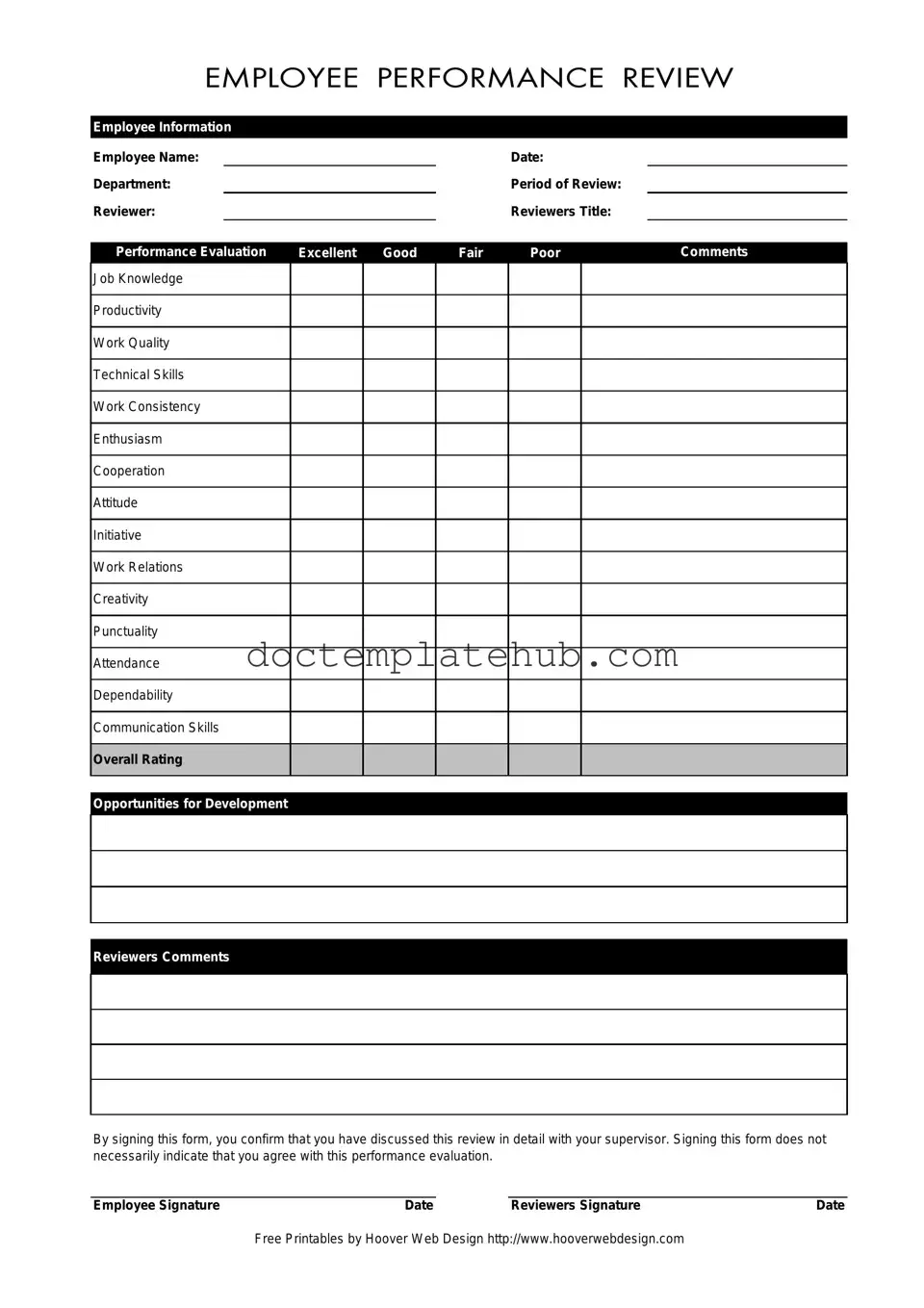What is the purpose of the Employee form?
The Employee form serves as a tool for evaluating an employee's performance over a specific period. It helps both the employee and the reviewer identify strengths and areas for improvement, fostering professional development and enhancing workplace communication.
What information do I need to provide on the form?
You will need to fill out your name, the date, your department, the review period, the name and title of the reviewer, and various performance metrics. These metrics include job knowledge, productivity, work quality, and other relevant skills.
How is the performance evaluation rated?
The performance evaluation is rated on a scale of Excellent, Good, Fair, and Poor. Each category allows the reviewer to provide a clear assessment of the employee's performance in different areas, making it easier to understand overall effectiveness.
What should I do if I disagree with my performance evaluation?
If you disagree with your evaluation, you should discuss your concerns with your supervisor. The form includes a section for comments, where you can express your thoughts. Remember, signing the form does not mean you agree with the evaluation; it simply indicates that you have discussed it with your supervisor.
What are the key areas evaluated in the performance review?
The review assesses various areas, including job knowledge, productivity, work quality, technical skills, and communication skills. Each area is crucial for understanding your overall performance and identifying potential growth opportunities.
How can I prepare for my performance review?
Preparation involves reflecting on your achievements, challenges, and goals. Consider gathering examples of your work that demonstrate your skills. It’s also helpful to think about areas where you would like to improve and any support you may need from your supervisor.
What happens after I sign the Employee form?
After signing the form, it is typically submitted to the HR department or kept on file with your supervisor. This documentation may be used for future performance evaluations or discussions about promotions and raises.
Can I request a copy of my completed Employee form?
Yes, you can request a copy of your completed Employee form. It is your right to have access to documents that pertain to your employment and performance evaluations. Speak to your supervisor or HR department to obtain a copy.
What is the significance of the comments section in the form?
The comments section allows both the reviewer and the employee to provide additional context to the ratings. It can highlight specific accomplishments, address concerns, or outline goals for the future. This feedback is essential for ongoing development and improvement.
